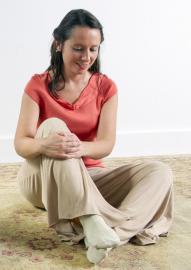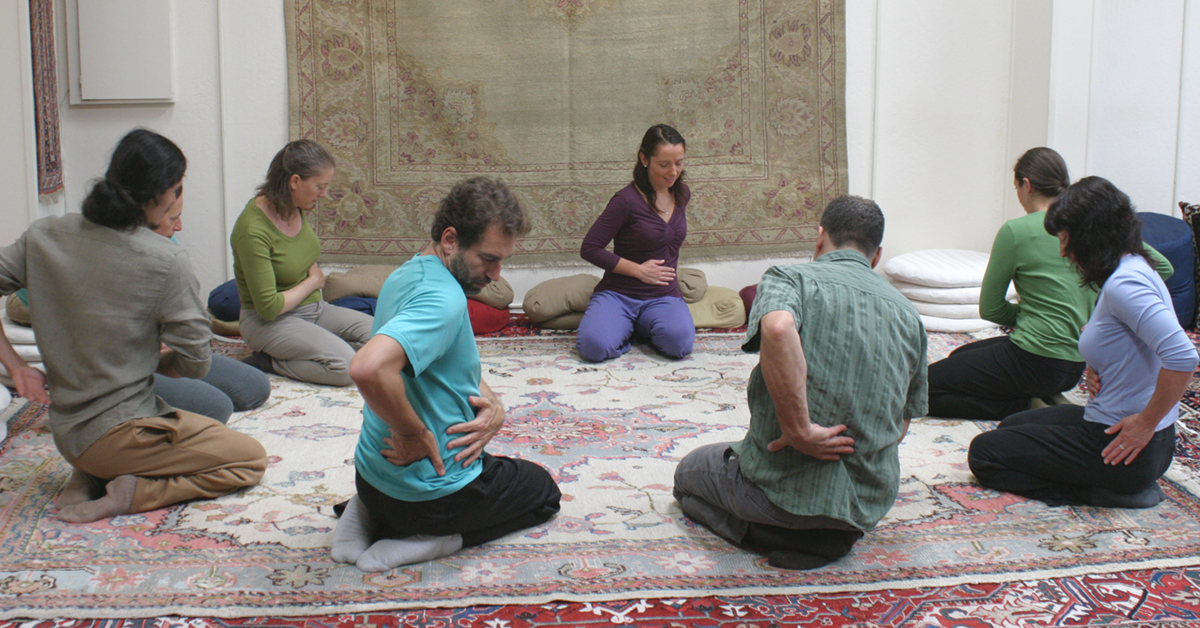
What if you could feel more comfortable being in your body, and could move more naturally with greater fluidity and ease? What if you could do simple, joyful movements that would support being more present and available to meet the events of life? As someone who sees how much of the time I don't even know I have a body, and who is basically healthy but with age has developed my share of physical limitations, I am glad to have Self-Breema as a regular practice. Self-Breema is one component of the comprehensive system called Breema, which also includes Breema bodywork and the Nine Principles of Harmony.
Self-Breema exercises are movements that connect you to your own body. Some are done slowly and contemplatively; others are done quickly and playfully. They are done sitting, standing, kneeling, and lying down, and include elements such as holding, tapping, brushing, rocking, and stretching. Whether practiced alone or in a group, the primary aim of doing them is to become more present. They are a unique opportunity to experience being both the giver and the receiver at the same time. As a side benefit, all the systems of the body receive exactly the combination of nurturing and stimulation they need.
Why Self-Breema could have a beneficial effect on your mind and feelings, as well as on your body, is described very well in a book written by Jon Schreiber, director of the Breema Center, the world headquarters for teaching Breema:
The movements of Self-Breema are balanced and in harmony with our essential nature. By working with the Breema principles as we practice Self-Breema, we simplify and purify the activity of the mind and feelings, inviting a higher lever of consciousness that is less mechanical and more purposeful to participate in the body's movements.
The physical body is a container. We usually fill it with thoughts and feelings that have a disharmonizing effect on our physiological function. When the container is filled with Consciousness, we experience aliveness and vitality in the body. When Consciousness participates in our activity, the imbalanced vibrations we receive from our surroundings are transformed into harmonious energy that can be beneficially used by the body.
Practicing Self-Breema and the Nine Principles invites physical flexibility, emotional balance, and mental clarity, and helps us to move in harmony with the natural laws that govern life and health. As body, mind, and feelings unite in a common aim, we become present. We experience a natural vitality and a deep connection to all life.
In the introduction to another of his books, he goes on to say:
At first, it may seem like Self-Breema is some external thing you're learning and practicing. But later, you may see that Self-Breema is not something you do, it's what you are. lt's a mirror of Existence that shows you your true nature.
After practicing Self-Breema for 20 years, I appreciate how it helps sustain and balance my energy and physiological functioning. But I am even more grateful for how it supports being less identified with my self-image and my body-ascontainer, and remembering often that I have a body but I am not this body. This knowledge helps keep me openminded and openhearted toward myself and others.
*Being with the Body, We are Supported was written by Elaine Pendergrast and was originally published in B.Real Magazine.
